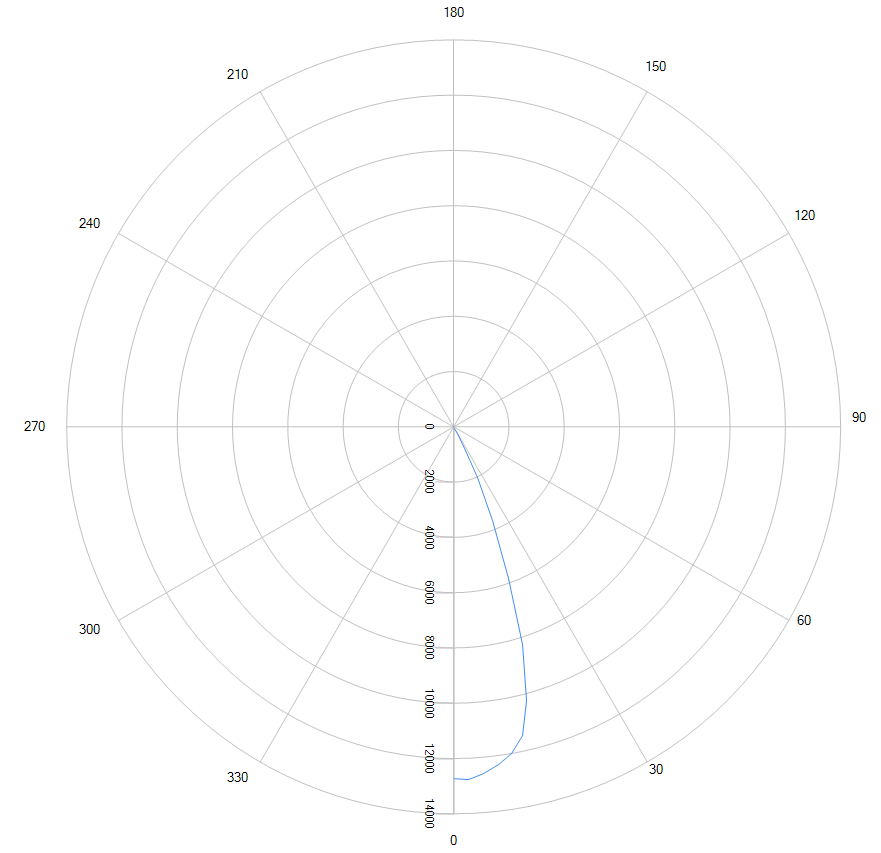Intermediate Tutorial: Design a COB LED Reflector
In this tutorial you will design a 40° beam medium flood reflector using the Parametric Optical Design Tools (PODT) and the CREE CXA 3050 COB LED. This tutorial assumes you know how to setup and run a Photopia analysis inside of SOLIDWORKS. If you need to review the basics of Photopia for SOLIDWORKS, then start with the SOLIDWORKS Beginner Tutorial.
Skill Level
Intermediate
Downloads
none

1. Start a New Part
Start SOLIDWORKS and click File > New and choose a Part. Set the units for the part to be MMGS.
Tip : Parts vs Assemblies
You'll create reflectors and lenses using the Photopia's Parametric Optical Design Tools (PODT) inside of Part files. Then you'll bring these Parts into an Assembly for raytracing.
2. Start a Sketch and Define Constraints
Select the Top Plane in the Feature Manager Tree, and then choose the Sketch tab from the Command Manager and click the Sketch button to create a new Sketch.
Next you will create a line which defines the lamp center and beam direction. From the Sketch tab in the Command Manager, click on the Line button and check “For construction”. Click to start the line at the origin and drag it down vertically to be about 10mm long. The exact length isn’t critical as this line defines the center of the beam and reflector revolve axis.
Finally, from the Sketch tab in the Command Manager, click on the Point button, click anywhere in the view to create the point, and then change its position to 45,-90 in the Property Manager.
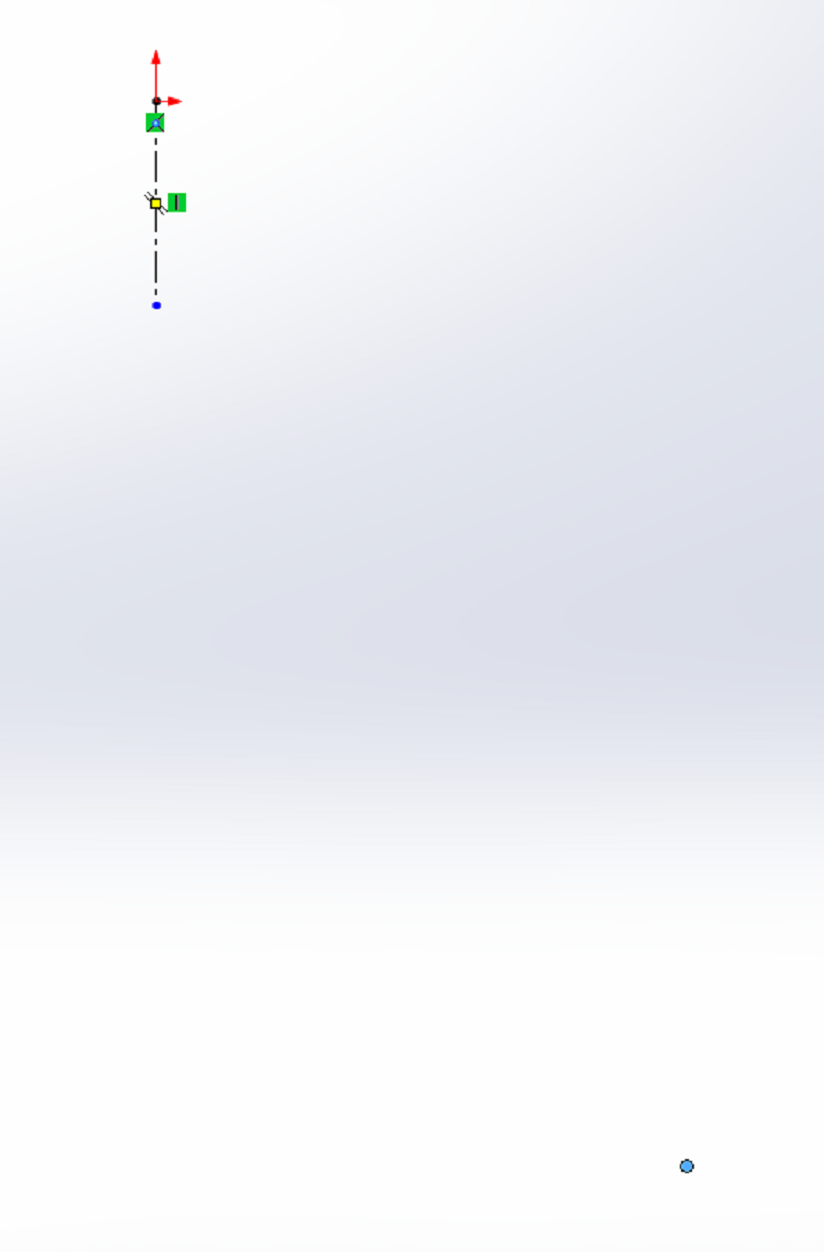
3. Create the Reflector
Ensure the sketch still open and click Design reflector (Photopia CommandManager Tab) or Tools > Photopia > Design reflector.
For the Lamp center property, select the sketch origin.
For the Start point, select the point you added to the sketch.
For the 0° aiming direction select the construction line.
Set the Angular extent to 63.4deg.
For the Aiming Start enter -30.
For the Aiming Increment enter 2.5.
For the Aiming End enter 0.
Click (check) to create the reflector profile and you should see the profile displayed in your Sketch.
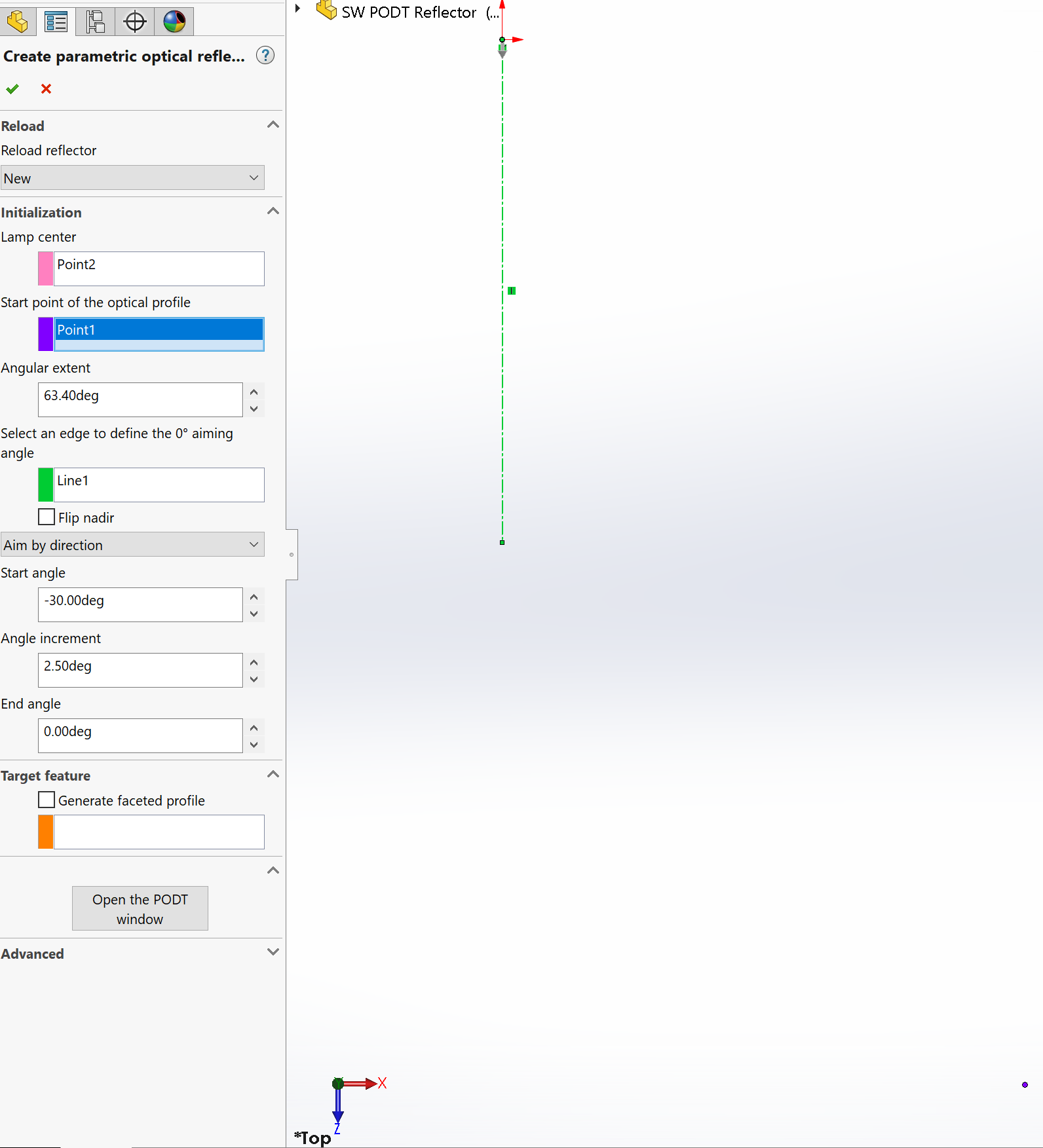
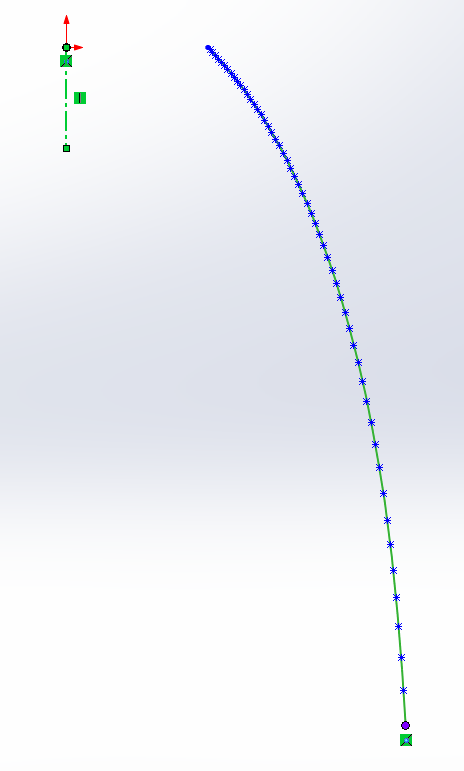
4. Create a Revolved Boss/Base Feature
Ensure the sketch is still open and click the Revolved Boss/Base button (Features CommandManager Tab).
If you see the following message from SOLIDWORKS, click No since we want to create a thin revolution and don’t want to modify the PODT generated profile.
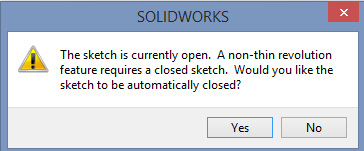
The the Axis of Revolution should automatically have selected the construction line.
The Contour should have automatically been populated with the PODT profile.
Set the Direction 1 Thickness to 0.5mm.
Click (check) to create the revolved feature and you should see your reflector.
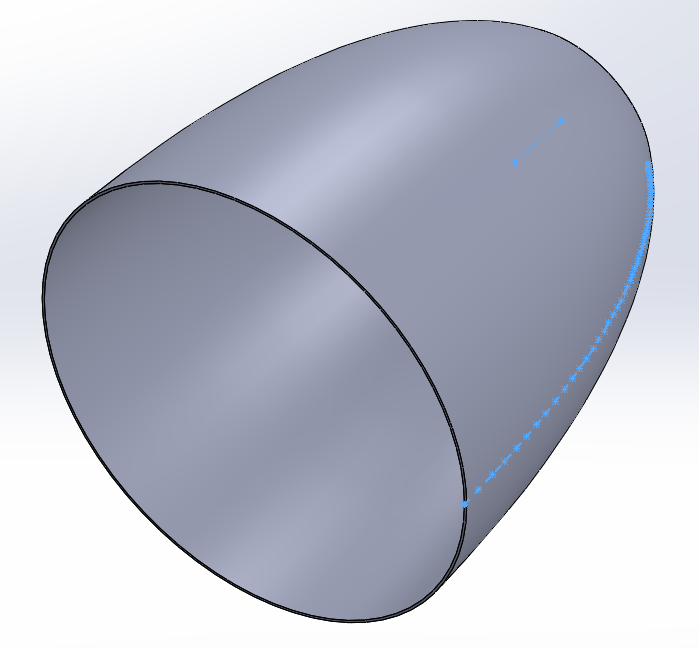
5. Create an Assembly and Import the COB LED
Choose File > Save to save the part file. Give it a name of COB Flood Reflector.
Choose File > Make Assembly from Part to create an assembly file.
Choose Insert > Reference Geometry > Coordinate System. Click in the Z Axis reference box and then click the Arrow button to reverse the direction of the z-axis.
Click (check) to create the coordinate system.
You should see the Z axis of the reference coordinate system point in the opposite direction of the SOLIDWORKS coordinate system in the lower left corner of the CAD view.
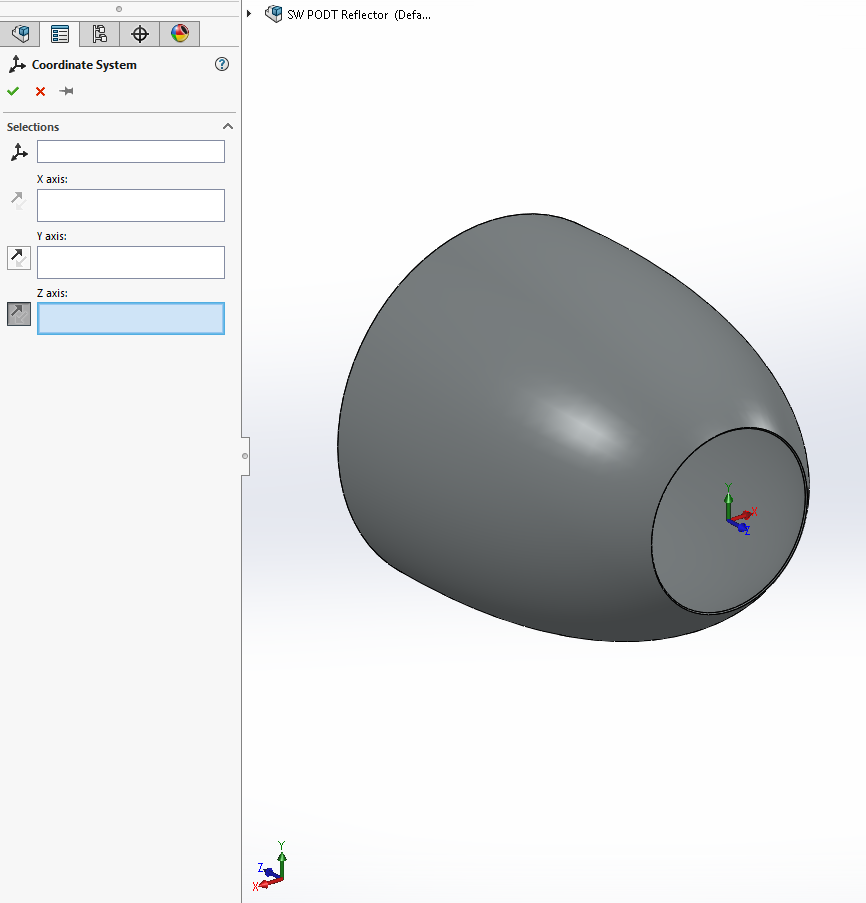
Select Coordinate System1 in the FeatureManager and then click the Add Lamp button (Photopia CommandManager Tab).
Scroll down to the following lamp in the list: CXA3050-5100K
You will see Coordinate System1 already referenced to this lamp model, which will ensure the lamp imports in the correct orientation.
Click (check) to import the lamp.

6. Prepare & Run the Photometric Simulation
In the Photopia Appearances Tab on the right (green sphere icon), find the “Generic Spec 85” reflective material.
Use the filter to show only the Reflective materials so you choose the right one.
Drag this material onto the Reflector Part in the Feature Manager to assign the material at the component level to the entire part.
Select Coordinate System1in the Feature Manager and then click the Photometric Settings button (Photopia CommandManager Tab).
Set the Horizontal test angles to: 0.
Set the Vertical test angles to: 0(2.5)90.
Click (check) save the Photometric Settings.
Click the Start Raytrace button (Photopia CommandManager Tab) to begin the raytrace.
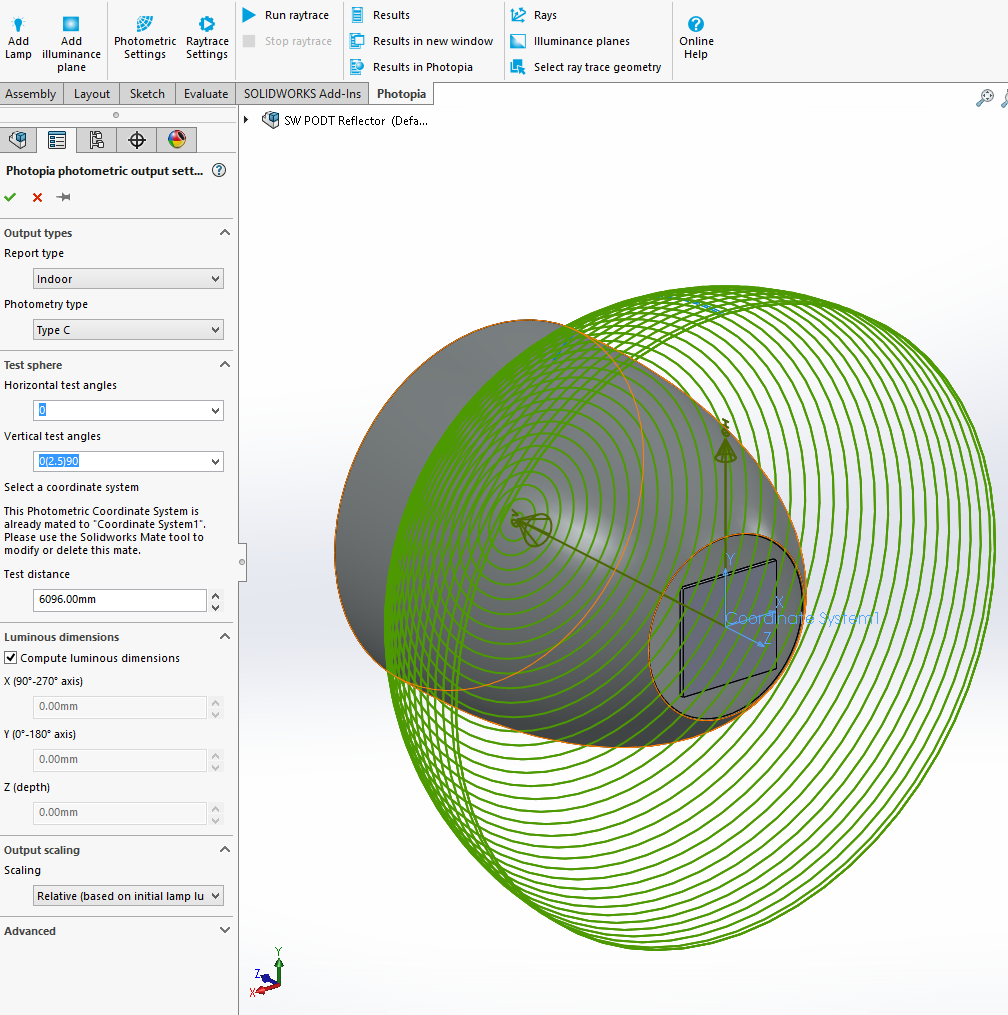
7. Review the Results
After the raytrace is complete, you should get a candela distribution.
The results for this initial reflector produce a 54° beam with the peak off center. Since we were targeting a 40° beam with a centered peak, we will now adjust the reflector profile.
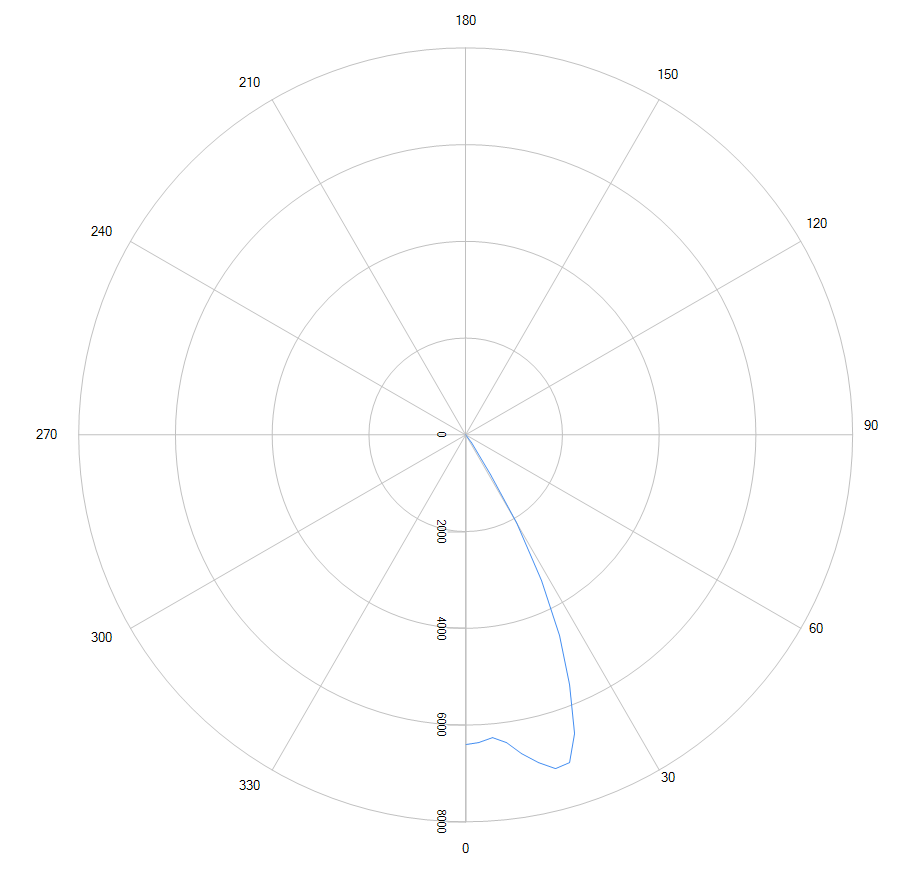
8. Modifying the COB Reflector
Right click on the COB Flood Reflector in the Feature Manager and select Edit Part from the flyout menu.
Select the Revolve-Thin1 feature and then click the Design reflector button (Photopia CommandManager Tab).
Under Reload Reflector, click the drop down list and choose the last item in the list. This will associate your initial reflector parameters with the revolved boss/base feature.
Click the Open PODT window button.
Change the Start angle to 27.5 and click Update Aiming to narrow the beam a bit.
Change the Weight minimum to 0.9.
Change the Weight exponent to -15.
You should now see the blue weighting factor plot with higher values in the beam center. The obtained candela plot from the last run is also shown in this view.
Close the PODT screen
Check the Generate faceted profile check box.
Click the (check) to update the reflector.
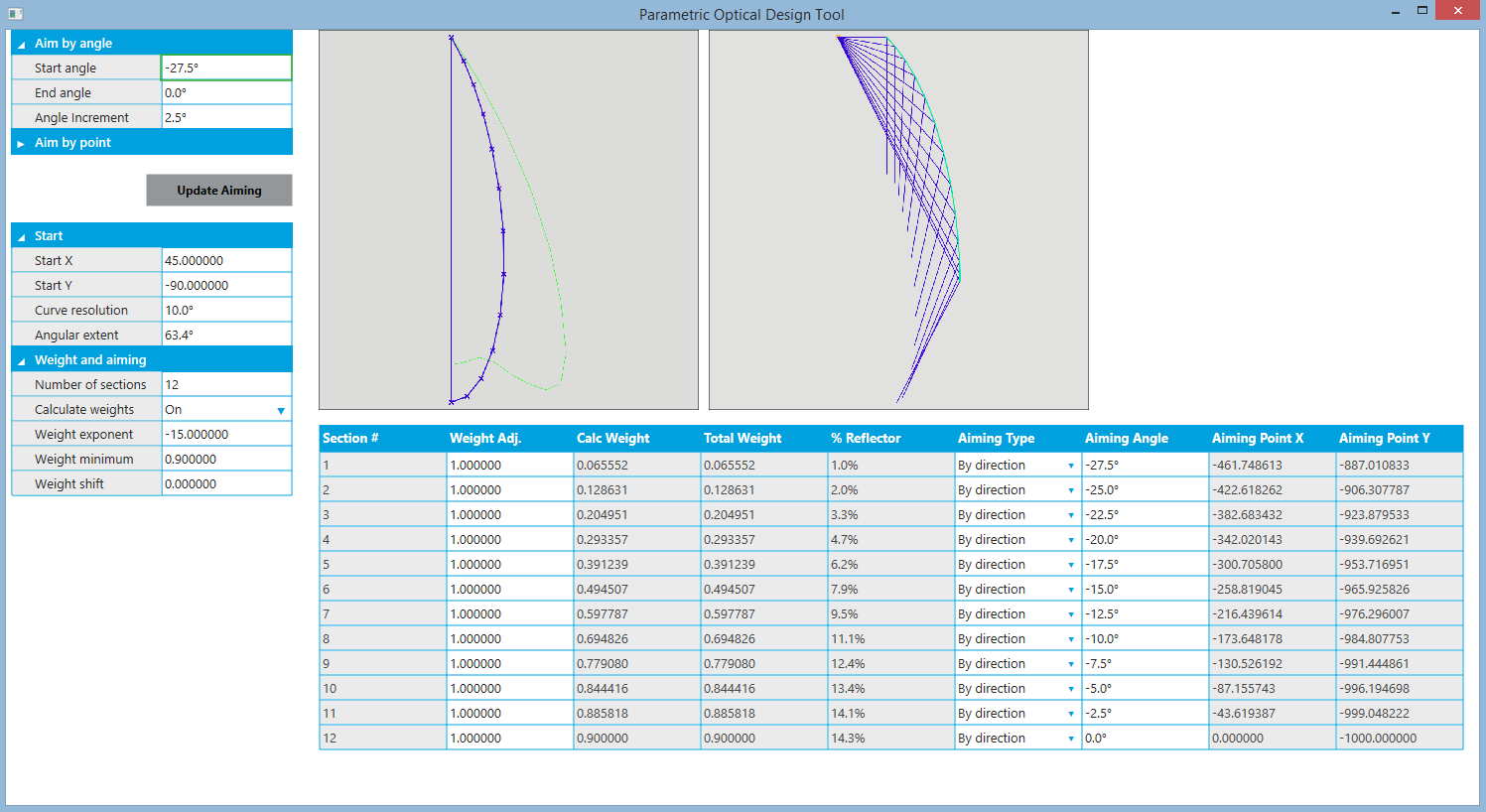
9. Rerun the Raytrace
Exit the part edit mode and return to the assembly. Run the simulation again.
You should now see a beam with the following distribution and about a 39° beam angle.
